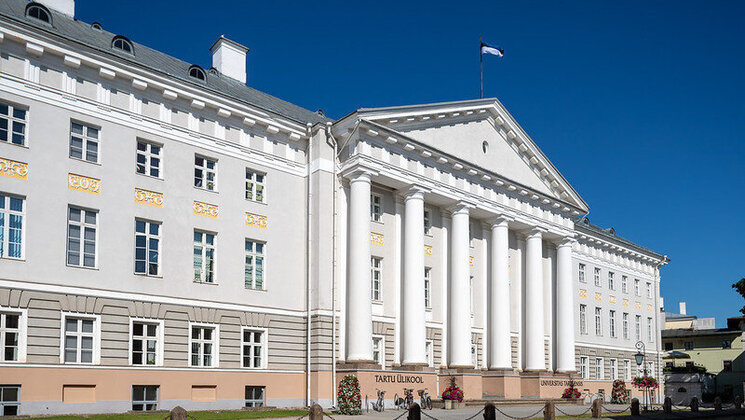-
Faculty of Arts and HumanitiesJakobi 2, r 116-121 51005 Tartu linn, Tartu linn, Tartumaa ESTJakobi 2 51005 Tartu linn, Tartu linn, Tartumaa ESTJakobi 2, IV korrus 51005 Tartu linn, Tartu linn, Tartumaa ESTJakobi 2, III korrus, ruumid 302-337 51005 Tartu linn, Tartu linn, Tartumaa ESTÜlikooli 16 51003 Tartu linn, Tartu linn, Tartumaa ESTLossi 3 51003 Tartu linn, Tartu linn, Tartumaa ESTÜlikooli 18 50090 Tartu linn, Tartu linn, Tartumaa ESTPosti 1 71004 Viljandi linn, Viljandimaa ESTJakobi 2 51005 Tartu linn, Tartu linn, Tartumaa ESTJakobi 2 51005 Tartu linn, Tartu linn, Tartumaa ESTFaculty of Social SciencesLossi 36 51003 Tartu linn, Tartu linn, Tartumaa ESTJakobi 5 51005 Tartu linn, Tartu linn, Tartumaa ESTLossi 36, ruum 301 51003 Tartu linn, Tartu linn, Tartumaa ESTNarva mnt 18 51009 Tartu linn, Tartu linn, Tartumaa ESTNäituse 2 50409 Tartu linn, Tartu linn, Tartumaa ESTNäituse 20 - 324 50409 Tartu linn, Tartu linn, Tartumaa ESTLossi 36 51003 Tartu linn, Tartu linn, Tartumaa ESTRaekoja plats 2 20307 Narva linn, Ida-Virumaa ESTRingi 35 80012 Pärnu linn, Pärnu linn, Pärnumaa ESTLossi 36 51003 Tartu linn, Tartu linn, Tartumaa ESTLossi 36 51003 Tartu linn, Tartu linn, Tartumaa ESTFaculty of MedicineRavila 19 50411 Tartu linn, Tartu linn, Tartumaa ESTBiomeedikum, Ravila 19 50411 Tartu linn, Tartu linn, Tartumaa ESTNooruse 1 50411 Tartu linn, Tartu linn, Tartumaa ESTL. Puusepa 1a 50406 Tartu linn, Tartu linn, Tartumaa ESTL. Puusepa 8 50406 Tartu linn, Tartu linn, Tartumaa ESTRavila 19 50411 Tartu linn, Tartu linn, Tartumaa ESTUjula 4 51008 Tartu linn, Tartu linn, Tartumaa ESTRavila 50411 Tartu linn, Tartu linn, Tartumaa ESTRavila 19 50411 Tartu linn, Tartu linn, Tartumaa ESTFaculty of Science and TechnologyVanemuise 46 - 208 51003 Tartu linn, Tartu linn, Tartumaa ESTNarva mnt 18 51009 Tartu linn, Tartu linn, Tartumaa ESTRiia 23b/2 51010 Tartu linn, Tartu linn, Tartumaa ESTRavila 14a 50411 Tartu linn, Tartu linn, Tartumaa ESTNarva mnt 18 51009 Tartu linn, Tartu linn, Tartumaa ESTRiia 23, 23b - 134 51010 Tartu linn, Tartu linn, Tartumaa ESTObservatooriumi 1 61602 Tõravere alevik, Nõo vald, Tartumaa ESTNooruse 1 50411 Tartu linn, Tartu linn, Tartumaa ESTJ. Liivi tn 2 50409 Tartu linn, Tartu linn, Tartumaa ESTVanemuise 46 51003 Tartu linn, Tartu linn, Tartumaa ESTVanemuise 46 51003 Tartu linn, Tartu linn, Tartumaa ESTArea of Academic SecretaryLossi 3 51003 Tartu linn, Tartu linn, Tartumaa ESTUppsala 6, Lossi 36 51003 Tartu linn, Tartu linn, Tartumaa ESTArea of Head of FinanceÜlikooli 17 51005 Tartu linn, Tartu linn, Tartumaa ESTArea of Director of AdministrationÜlikooli 18A (III korrus) 51005 Tartu linn, Tartu linn, Tartumaa ESTÜlikooli 18, ruumid 102, 104, 209, 210 50090 Tartu linn, Tartu linn, Tartumaa ESTArea of RectorArea of Vice Rector for Academic AffairsUppsala 10 51003 Tartu linn, Tartu linn, Tartumaa ESTÜlikooli 18b 51005 Tartu linn, Tartu linn, Tartumaa ESTArea of Vice Rector for ResearchW. Struve 1 50091 Tartu linn, Tartu linn, Tartumaa ESTArea of Vice Rector for DevelopmentNarva mnt 18 51009 Tartu linn, Tartu linn, Tartumaa ESTVanemuise 46 51003 Tartu linn, Tartu linn, Tartumaa ESTLossi 25 51003 Tartu linn, Tartu linn, Tartumaa EST
University rectors: extra money helps slow down the free fall, but the crisis in higher education continues

Today, after lengthy negotiations with the government, the six public universities of Estonia signed administrative contracts for 2022–2025. At the beginning of the year, the rectors decided not to sign the contracts as, due to the poor public funding, it would have been impossible to perform the contractual obligations. The extra money promised from the state budget for this year and the next four years will help reduce the shortage, but rectors say it is not enough to solve the higher education crisis.
“We are grateful that the government has found a way to allocate extra money to universities, especially in view of the numerous crises we are facing as a country. The additional support will undoubtedly help the universities and slow the recent years’ free fall in funding. We hope that the funding pledge that the current government has formulated in the state budget strategy for the next four years will also be upheld by our next governments. Meanwhile, however, we need to find a way to finance higher education at a level that meets the actual needs, i.e. 1.5% of the GDP,” said Toomas Asser, Rector of the University of Tartu, Chairman of Universities Estonia.
The extra money will keep higher education funding at around 1% of the GDP. Data gathered by Universities Estonia show that in comparison with other countries offering free university education, Estonia invests significantly less in higher education as a share of GDP and per student. Only the universities of Cyprus and Greece receive less money than Estonia.
“The state has promised an additional €10 million for higher education this year and an annual increase of 15% in activity support over the next four years. While the extra money is vital for the universities to halt the decline in funding, it will not be enough to cover the actual shortfall accumulated over the years. Nor does it take inflation into account. The increase in electricity and heating costs alone will bring an extra cost of around €10 million for universities this year. If we put the numbers in perspective, we can see that universities are not facing a huge gain,” Asser said.
“The rectors agree that the crisis has not been solved yet. The debate over the future of higher education must continue. It is time to focus on the long-term plan and discuss how to guarantee 1.5% of GDP for higher education. This would, on the one hand, provide stability for universities, and on the other hand, it is necessary to organise the system of student loans and allowances. The amount of about €100 million more per year ensures that universities can keep teaching up to date, take into account the labour market needs and the green and digital transition in curriculum development, meet the expectations of knowledgeable future students, and guarantee the development of the Estonian language of science, Estonian terminology and Estonian culture. And, of course, keep our university staff who have to implement all of the above,” Toomas Asser explained the positions of Universities Estonia.
“More than a year ago, when we started talking about the deep crisis in higher education funding with university rectors, we were under no illusion that the crisis can be solved solely by an amount of money in the activity support line of the state budget. We can and we must discuss what kind of higher education Estonia needs and can maintain and who should pay for it. Strategic planning for the future of higher education, but also for education policy more generally, requires political will and consideration of different alternatives. The future of the Estonian-language higher education must be one of the main topics of the Riigikogu elections in 2023,” said Toomas Asser.
Read more similar news






